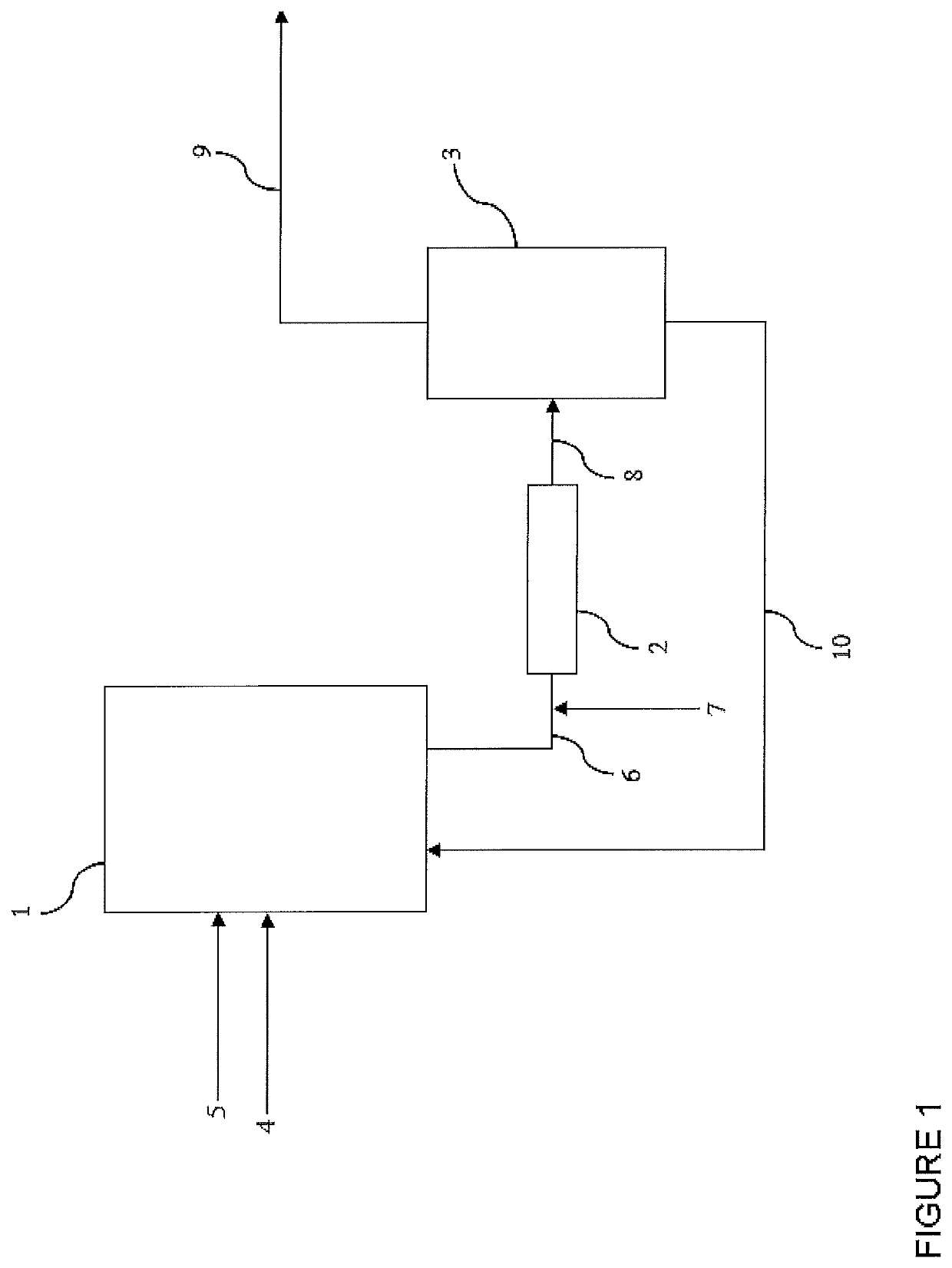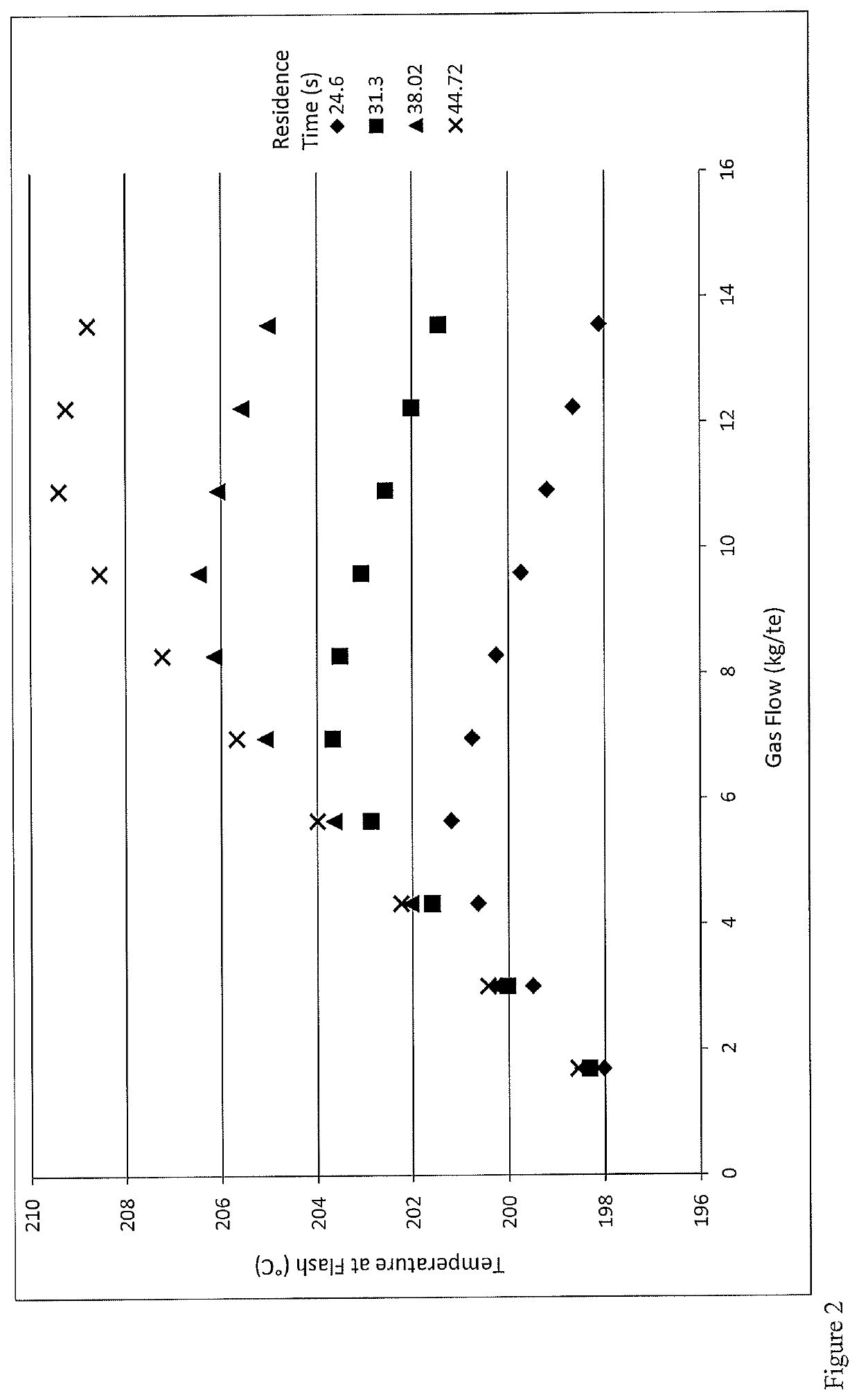Process for the production of acetic acid
a technology of acetic acid and process, which is applied in the direction of carboxylic compound separation/purification, carbon monoxide reaction carboxylic preparation, organic chemistry, etc., can solve the problem of increasing the expected amount of carbon monoxide passing to the flash separation system
- Summary
- Abstract
- Description
- Claims
- Application Information
AI Technical Summary
Benefits of technology
Problems solved by technology
Method used
Image
Examples
Embodiment Construction
[0020]In the present invention, methanol and / or reactive derivatives thereof are introduced into the first reaction zone as liquid reactants, for example, methanol may be introduced into the first reaction zone as a reactant, one or more reactive derivatives may be introduced into the first reaction zone as a reactant, or a combination of methanol together with one or more reactive derivatives of methanol may be introduced into the first reaction zone as reactants. Suitable reactive derivatives of methanol include methyl acetate, dimethyl ether and methyl iodide. Preferably, methanol and / or methyl acetate are used as liquid reactants; in one embodiment, methanol is used as a reactant; in another embodiment, methyl acetate is used as a reactant; in yet another embodiment, a mixture of methanol and methyl acetate is used as reactants.
[0021]Methyl acetate may be formed in situ in the liquid reaction composition by the reaction of methanol and / or reactive derivative thereof with the ace...
PUM
| Property | Measurement | Unit |
|---|---|---|
| temperature | aaaaa | aaaaa |
| reaction temperature | aaaaa | aaaaa |
| reaction temperature | aaaaa | aaaaa |
Abstract
Description
Claims
Application Information
 Login to View More
Login to View More - R&D
- Intellectual Property
- Life Sciences
- Materials
- Tech Scout
- Unparalleled Data Quality
- Higher Quality Content
- 60% Fewer Hallucinations
Browse by: Latest US Patents, China's latest patents, Technical Efficacy Thesaurus, Application Domain, Technology Topic, Popular Technical Reports.
© 2025 PatSnap. All rights reserved.Legal|Privacy policy|Modern Slavery Act Transparency Statement|Sitemap|About US| Contact US: help@patsnap.com


